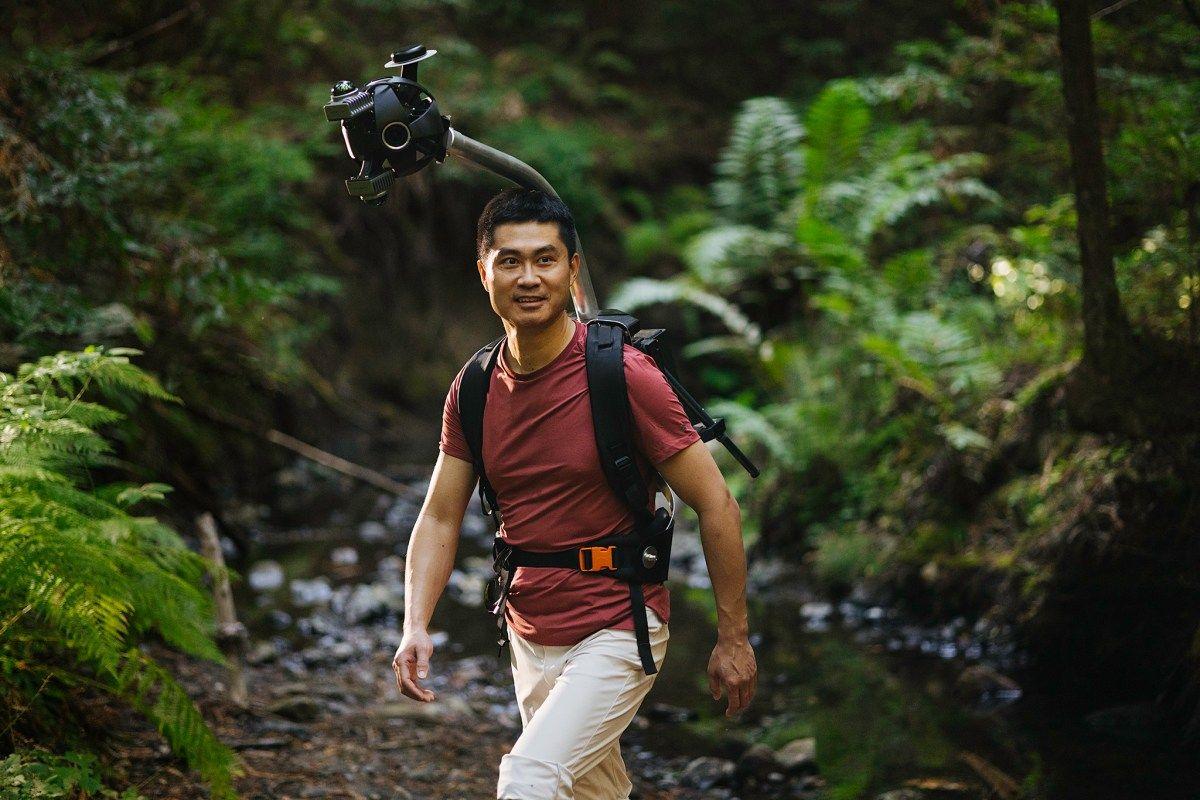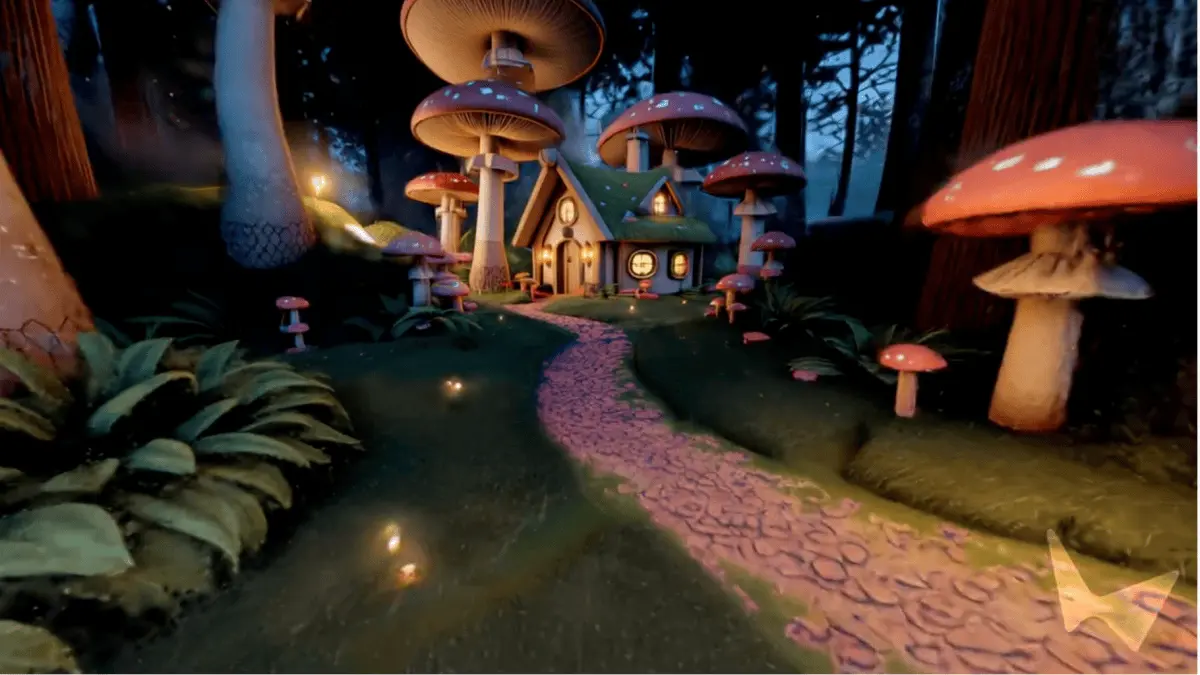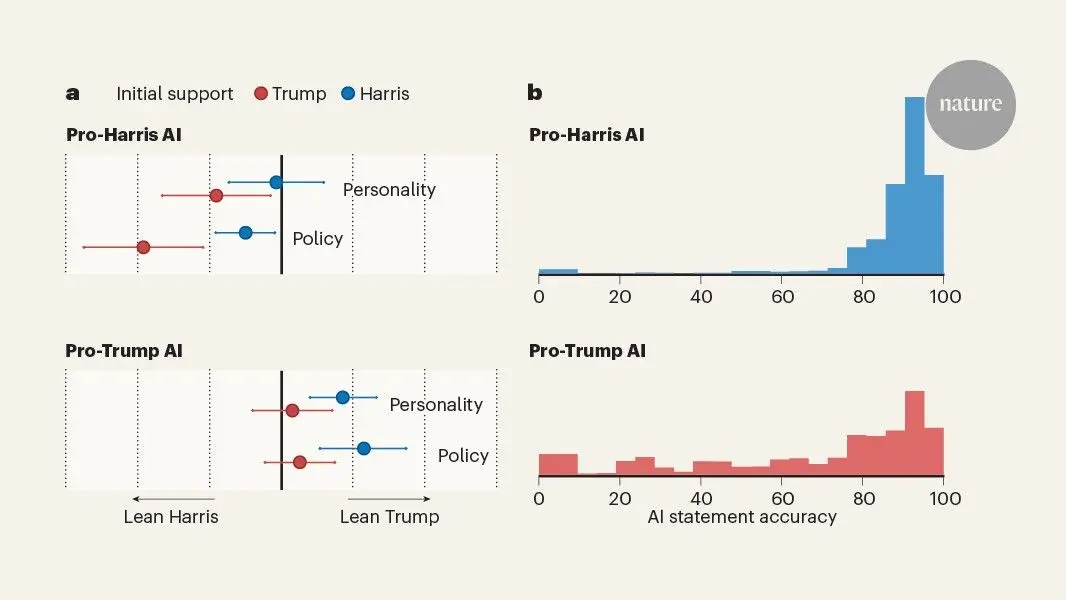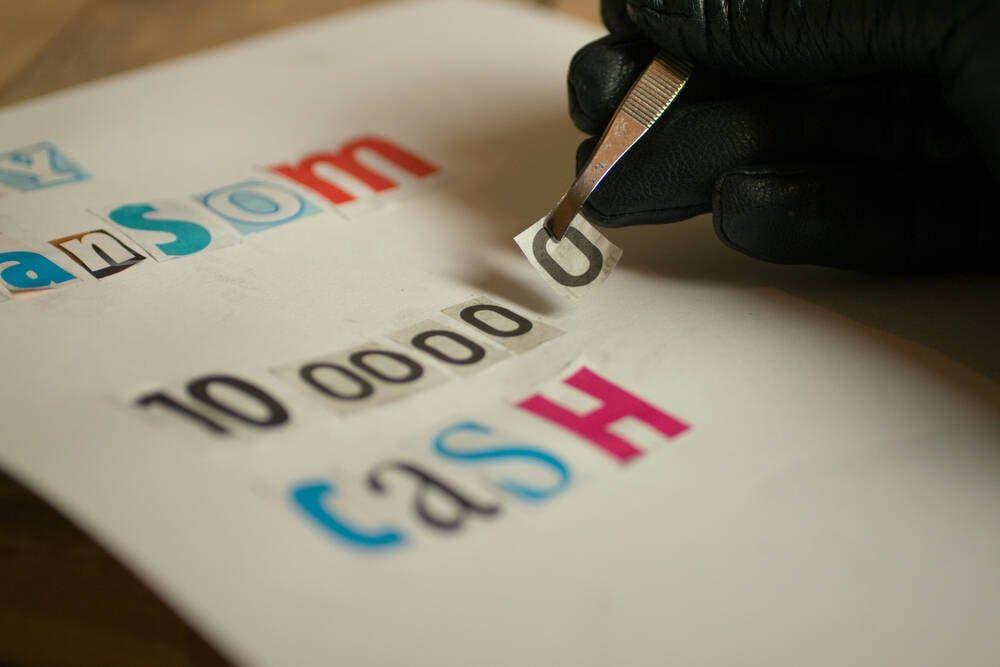World Labs Unveils Groundbreaking AI System for Generating Interactive 3D Environments from Single Images
6 Sources
6 Sources
[1]
This incredible AI is capable of generating ultra-realistic 3D environments with just one image - Softonic
World Labs, led by the "godmother of AI" Fei-Fei Li, presents its first system World Labs, the startup led by the renowned artificial intelligence expert Fei-Fei Li, has unveiled its first project: an innovative system that turns a single image into an interactive 3D environment, similar to a video game. "This [system] allows you to delve into any image and explore it in 3D," the company explains on its blog. "Beyond the input image, everything is generated automatically." Unlike other tools that transform photos into three-dimensional models, the World Labs system stands out for being interactive and editable. As seen in a demonstration on their website, the generated scenes can be explored with a keyboard and mouse while adjusting parameters such as depth of field, which modifies the blur of background objects. Although the aesthetics are somewhat cartoonish, its real-time performance is impressive, to say the least. The project falls within the emerging category of "world models," technology used to simulate 3D environments, such as the case of Oasis, by Decart. However, World Labs claims that their approach surpasses these limitations by maintaining coherence in designs and respecting the basic laws of physics, achieving scenes with solidity and depth. Additionally, their system allows for the addition of interactive effects such as changes in object colors and dynamic lighting adjustments. Despite its potential, the tool currently presents certain limitations. For example, users can only move in small areas and, occasionally, rendering errors appear, such as objects blending unnaturally. The company acknowledges that this is just an "initial advance" and assures that it is working on expanding interaction possibilities and improving the quality of the scenes. World Labs plans to expand the applications of its technology beyond video games, with the aim that artists, filmmakers, and developers can use it to transform the way movies, simulators, and interactive digital experiences are created.
[2]
See Fei-Fei Li's World Labs generate 3D environments from a single picture
World Labs has announced a new AI feature that turns 2D images into tiny worlds. This tool, the first from Fei-Fei Li's highly hyped startup, takes a prompt or 2D reference image and spits out a fully navigable 3D environment. By generating in 3D, World Labs can avoid some of the the control and consistency issues in other image and video generators. The GenAI tool creates scenes with persistent visual aspects, real-time control, and consistent geometry, allowing creators to create precise camera movements within the generated environment -- though the boundaries of the scene are still pretty close. This kind of quick generation could have a huge impact on the way people create movies, video games, and simulators -- especially when incorporated with a workflow that uses other AI video tools. Animation studios have already begun experimenting with using this tech to create consistent AI generated backgrounds to easily stage characters in various scenes. The tool isn't live for general use but you can explore some examples of what will be possible to create on their website.
[3]
This AI System Can Turn an Image Into 3D Interactive Scenes
The company says the generated worlds follow the rules of 3D geometry World Labs, the artificial intelligence (AI) startup, unveiled its first AI system on Monday. The currently unnamed AI system can generate interactive 3D worlds using an image input. These generated worlds turn the 2D visual asset into explorable 3D scenes where users can navigate using a keyboard and mouse. The AI system is currently in preview and has not been made public. However, the startup, which was founded by the computer scientist Fei-Fei Li, stated that it is working to release the full version soon. In a blog post, the San Francisco-based startup showcased the capabilities of its AI model. World Labs highlighted that most generative AI tools today can create 2D content such as images or videos. Although some AI firms do generate 3D models from 2D images or text prompts, the scope is pretty limited. In recent times, only Google DeepMind has unveiled an AI model that generates unique 2D video game levels. However, based on the interactive assets shared by the startup, the unnamed AI system's capabilities surpass the generative capabilities seen so far. Put short, the company claims users can add any image that depicts a scene as input, and the AI model can generate a 3D interactive version of the scene. This means users can move forward, backwards, and side-to-side and explore the generated area. The AI model does not only generate three-dimensional renders of the objects in the image, it also creates unseen details such as new alleyways, ceiling art, new objects and more from scratch. World Labs claim that apart from the initial image, everything is generated by the AI system. Additionally, the generated scenes can also be modified. Users can change camera angles, depth, and zoom as well as add 3D effects to the background as well as the objects in the foreground. World Labs' AI system can also be integrated with other AI tools. The startup said this will allow creators to first generate the starting image using a familiar text-to-image generator such as Ideogram, Dall-E, or Midjourney and then create a 3D world using the startup's tool. The AI firm is currently working with a few creators to test the AI system's capabilities and its 3D-native generative AI workflow. As of now, the AI system is not available in the public domain, and the startup highlighted that it is still working on it to improve the size and the fidelity of the generated worlds. However, interested individuals can join the company's waitlist to be informed when the AI system is released.
[4]
World Labs' AI can generate interactive 3D scenes from a single photo | TechCrunch
World Labs, the startup founded by AI pioneer Fei-Fei Li, has unveiled its first project: an AI system that can generate video game-like, 3D scenes from a single image. The AI-generated scenes, which anyone with a keyboard and mouse can explore on a demo on World Labs' website, look impressive -- if a bit cartoonish. They're rendered live in the browser, and have a controllable camera with an adjustable simulated depth of field (DoF). The stronger the DoF effect, the blurrier background objects appear. World Labs' system is a part of an emerging category of AI called "world models." Many of these models can simulate games and 3D environments -- but with artifacting and consistency issues. For example, startup Decart's Minecraft-simulating world model, Oasis, has a low resolution and quickly "forgets" the layout of levels. In contrast, World Labs' approach ensures that scenes remain the same once they're generated, and that they obey the basic laws of physics, meaning they have a sense of solidity and depth. World Labs' system can also apply interactive effects and animations to scenes, like changing the color of objects and dynamically lighting backdrops. "Most generative AI tools make 2D content like images or videos," World Labs wrote in a blog post. "Generating in 3D instead improves control and consistency. This will change how we make movies, games, simulators, and other digital manifestations of our physical world." Now, there's certainly room for improvement. World Labs' scenes aren't fully explorable -- your movements are limited to a small area. (Try moving outside it, and you'll hit a boundary.) And there's the occasional rendering error, for example objects that blend together in unnatural ways. But World Labs says that it's only an "early preview." "We are hard at work improving the size and fidelity of our generated worlds, and experimenting with new ways for users to interact with them," they wrote in the blog. World Labs, which launched earlier this year, has raised $230 million in venture capital from investors including Andreessen Horowitz (a16z), Ashton Kutcher, Intel Capital, AMD Ventures, and Eric Schmidt. Valued at over $1 billion, the company hopes to have its first product ready in 2025. Beyond interactive scenes, World Labs plans to build tools that might be useful to professionals like artists, designers, developers, filmmakers, and engineers. It's targeting customers ranging from video game developers to movie studios. "We already have the ability to create virtual, interactive worlds, but it costs hundreds and hundreds of millions of dollars and a ton of development time," World Labs co-founder Justin Johnson said on a recent episode of the a16z podcast. "[World models] will let you not just get an image or a clip out, but a fully simulated, vibrant, and interactive 3D world."
[5]
Worldl Labs AI Turns 2D Images Into Stunning 3D Worlds
World Labs, a leader in spatial intelligence AI, has developed an innovative system that transforms static 2D images into fully interactive 3D environments. This technology bridges the gap between flat visuals and immersive spatial experiences, providing a powerful tool for industries like game design, virtual reality (VR), and architectural visualization. Using advanced AI, the system delivers precise geometry, realistic depth, and dynamic lighting while remaining accessible to both professionals and enthusiasts. Its ability to simplify complex workflows while delivering professional-grade results marks a significant step forward in digital content creation. Imagine being able to explore a photo as if it were a real, tangible world. Whether it's a breathtaking vacation landscape or an intricate digital artwork, the dream of turning flat images into explorable spaces is now a reality. World Labs has made this possible with their technology, transforming 2D visuals into dynamic 3D environments and unlocking creative possibilities for creators and innovators. This system offers immense creative freedom. Game designers can create immersive worlds without the painstaking effort of manual modeling, architects can provide clients virtual walk-throughs of designs before construction begins, and hobbyists can easily bring their artistic visions to life. By addressing challenges like inconsistent results and limited control in traditional generative AI, World Labs has developed a reliable and innovative tool. Whether you're a professional seeking to improve workflow efficiency or simply curious about the future of digital creativity, this technology is set to transform how we interact with images, and its potential is just beginning to unfold. At the core of this system is its ability to analyze spatial relationships within a 2D image and generate accurate 3D environments. The AI creates detailed depth maps and realistic geometry, making sure that objects maintain their proportions and spatial relationships from any perspective. Unlike traditional methods, which often struggle with consistency and physical accuracy, this system excels in delivering coherent and reliable results. It also supports real-time rendering, allowing you to explore 3D environments directly in a web browser without requiring complex software installations. Whether you're designing a game level, creating a virtual walkthrough of a building, or experimenting with artistic concepts, this technology streamlines the process while delivering high-quality outputs. World Labs' system is equipped with a range of features designed to enhance creativity and provide users with greater control over their projects. These capabilities make it a versatile tool for professionals and hobbyists alike: These tools empower users to create dynamic, visually compelling environments while maintaining complete control over every detail, making the system adaptable to a wide range of creative needs. Find more information on AI design by browsing our extensive range of articles, guides and tutorials. The versatility of this technology makes it a valuable asset across multiple industries, allowing professionals to achieve their goals more efficiently and effectively. Here are some of its key applications: By lowering the barriers to entry for 3D content creation, this technology opens up new opportunities for professionals and enthusiasts, fostering innovation across various fields. World Labs' system extends beyond static 3D environments by introducing interactive tools that enhance engagement and creativity. For example, depth map visualization allows users to better understand the spatial structure of a scene, making it easier to refine intricate details. Additionally, interactive effects such as animated color waves or sonar ripples add a dynamic layer to projects, making them more engaging and visually striking. One particularly noteworthy feature enables users to "step into" a painting or artistic scene, transforming flat artwork into explorable 3D worlds. This capability has significant implications for education and cultural preservation. Museums, for instance, could use the technology to create interactive exhibits, allowing visitors to explore historical paintings or artifacts in an entirely new dimension. This blend of creativity and functionality highlights the system's potential to redefine how we interact with digital and artistic content. This system distinguishes itself from traditional generative AI models by addressing common challenges such as maintaining consistency across perspectives. Objects, lighting, and shadows remain accurate regardless of the viewing angle, making sure a seamless and realistic experience for users. Another key advantage is its scalability. Users can adjust the level of detail in a scene to balance realism with computational efficiency, tailoring the output to their specific requirements. This flexibility makes the technology suitable for a wide range of applications, from high-end productions to lightweight prototypes. Its ability to adapt to different needs without compromising quality sets it apart as a versatile and reliable tool for 3D content creation. The future of this technology is filled with exciting possibilities. One particularly promising development is the potential integration of text-to-3D generation, where simple text prompts could create complex 3D environments. Imagine typing "a serene forest at sunrise" and instantly generating a detailed, explorable scene complete with realistic lighting and textures. As the technology continues to evolve, its applications in VR and immersive virtual worlds could transform how we interact with digital content. From education to entertainment, the ability to create fully interactive environments from minimal inputs could provide widespread access to access to high-quality 3D content, empowering creators across industries. This evolution has the potential to redefine digital experiences, making them more accessible, engaging, and impactful.
[6]
'Something Previously Impossible': New AI Makes 3D Worlds Out of a Single Image
World Labs, a unicorn AI startup with a valuation of over $1 billion, unveiled a new AI on Monday that can transform any image into a 3D world. World Labs wrote in a thread on X that its new AI system works by taking an image, approximating 3D geometry, and filling in the scene so that there's more to see. The AI adapts to different art styles and scenes. The output is fully interactive, so viewers can view the 3D scenes as if they were inside them with a movable camera. They can zoom in and out and move around the space. Related: Testers Leak OpenAI's New AI Video Generator, Claiming They Were Used as 'Unpaid Labor' "Most GenAI tools make 2D content like images or videos," World Labs wrote in a blog post. "Generating in 3D instead improves control and consistency. This will change how we make movies, games, simulators, and other digital manifestations of our physical world." In another demo, content creator and animator Eric Solorio showcases how he uses the technology to quickly generate 3D environments and scenes. "The process was very fast and easy," Solorio stated. "Something previously impossible, with this level of precision." World Labs says that AI-generated images can be used as the foundation for 3D spaces, too, and the entire process of creating a 3D world, from the image to the world itself, can be AI-generated. Although these demos are a "first early preview" of what its technology can do, according to the company, the team is working on making the generated worlds bigger and more true to form. The company hopes to have its first product ready sometime next year.
Share
Share
Copy Link
World Labs, led by AI pioneer Fei-Fei Li, has introduced an innovative AI system that transforms 2D images into explorable 3D environments, potentially revolutionizing content creation for games, movies, and virtual experiences.

World Labs Introduces Revolutionary AI-Powered 3D Environment Generator
World Labs, a startup led by renowned AI expert Fei-Fei Li, has unveiled its first project: an innovative AI system capable of generating interactive 3D environments from a single 2D image. This groundbreaking technology marks a significant advancement in the field of generative AI and has the potential to transform various industries, including video game development, filmmaking, and virtual reality experiences
1
.How It Works
The AI system takes a single image as input and creates a fully navigable 3D environment that users can explore using a keyboard and mouse. Unlike other tools that transform photos into three-dimensional models, World Labs' system stands out for its interactivity and editability. The generated scenes maintain coherence in designs and respect basic laws of physics, achieving a sense of solidity and depth
2
.Key Features and Capabilities
- Real-time rendering and exploration
- Adjustable parameters such as depth of field and camera angles
- Interactive effects and animations, including color changes and dynamic lighting
- Generation of unseen details and objects beyond the initial input image
- Integration with other AI tools for a comprehensive workflow
3
Potential Applications
The technology has wide-ranging applications across multiple industries:
- Video game development: Rapid creation of explorable environments
- Film production: Generation of consistent AI-generated backgrounds for staging scenes
- Architecture and design: Virtual walkthroughs of proposed designs
- Education and cultural preservation: Interactive exhibits for museums and historical sites
4
Related Stories
Current Limitations and Future Developments
While impressive, the system currently has some limitations. Users can only move within small areas, and occasional rendering errors may occur. World Labs acknowledges that this is an "initial advance" and is actively working on expanding interaction possibilities and improving scene quality
5
.Future developments may include:
- Increased size and fidelity of generated worlds
- Text-to-3D generation capabilities
- Enhanced integration with virtual reality platforms
Industry Impact and Investment
World Labs has garnered significant attention and investment, raising $230 million in venture capital from prominent investors such as Andreessen Horowitz, Intel Capital, and Eric Schmidt. Valued at over $1 billion, the company aims to have its first product ready by 2025
4
.As the technology continues to evolve, it has the potential to revolutionize content creation across various industries, making the process more efficient, cost-effective, and accessible to both professionals and enthusiasts. The ability to generate interactive 3D environments from simple 2D inputs could significantly reduce development time and costs for complex digital experiences, opening up new possibilities for creativity and innovation in the digital realm.
References
Summarized by
Navi
[1]
[3]
[5]
Related Stories
DeepMind's Genie 3: A Breakthrough in AI World Models with Potential for AGI
06 Aug 2025•Technology

Odyssey Unveils Groundbreaking AI-Generated Interactive Video Worlds
29 May 2025•Technology

World Labs Launches Marble: Fei-Fei Li's Commercial 3D World Generation Model Enters the Market
12 Nov 2025•Technology








